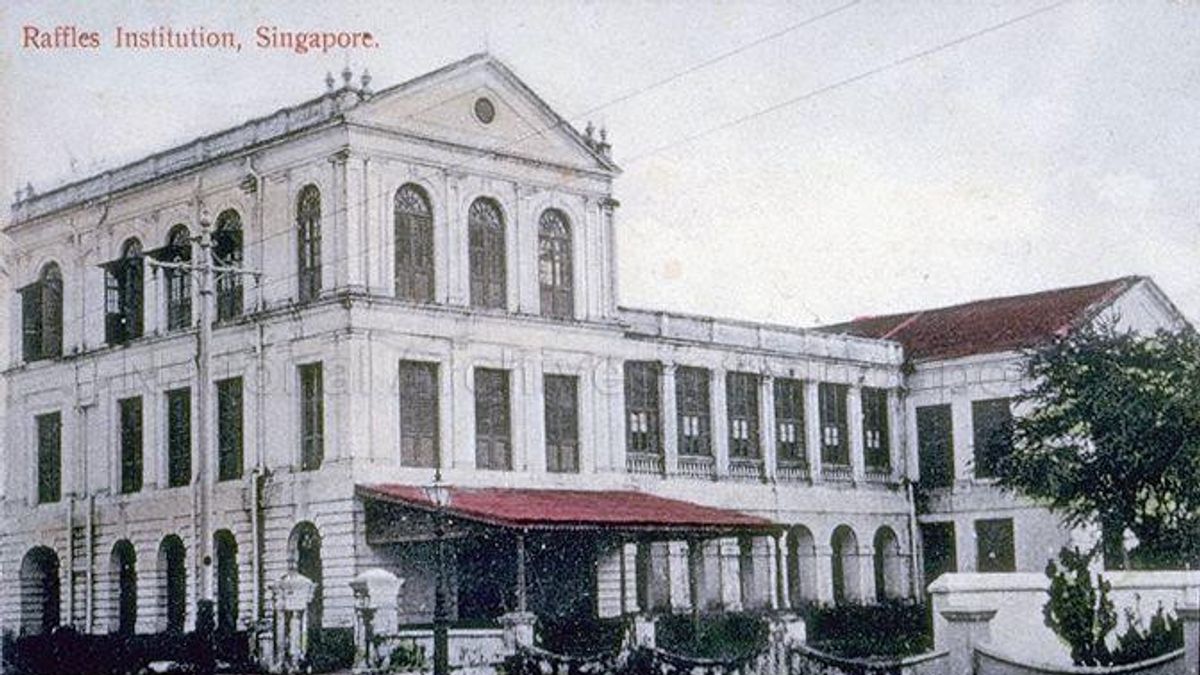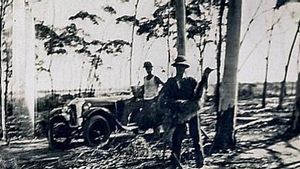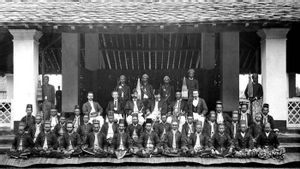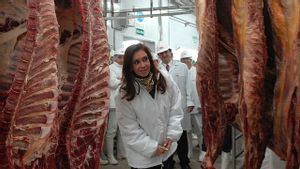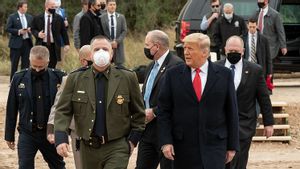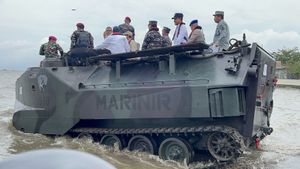JAKARTA - The fame of Thomas Stamford Raffles in Southeast Asia cannot be doubted. He once led the Dutch East Indies and Bengkulu. Raffles' leadership remains in the eyes of his country and British trading airline EIC.
His achievements were even more successful when he chose Singapore as the new British trade post. He was able to change the slum face of Singapore. Raffles tried to build a modern civilization in Singapore. He was transformed into the first person to build a school in Singapore.
British trading conspiracy, East India Company (EIC) once had role model officials. Raffles, his name. The figure then gained the trust to run the British power in the Dutch East Indies. Raffles also served in an area previously controlled by the Dutch as Lieutenant Governor General.
He held this position from 1811-1816. His leadership went well. Despite the controversy. Even his leadership in the archipelago was able to produce phenomenal works The History of Java (1817).
Nothing lasts forever. His position in the archipelago is brief. The British Company then sent him to become Lieutenant Governor of Bencoleen (Bengkulu) who served from 1818-1824. There are no two Raffles loyalty to EIC.
He offered to perpetuate a search for the exact location of the British trade post in Southeast Asia. An expedition plan found a strategic free port was made. Ulam's beloved pinnacle arrives. Raffles' plan was approved.
The exhibition took Raffles and his entourage to Singapore in 1819. People saw Singapore as nothing more than a place of life for fishermen and the land filled with Dutch forests. However, Raffles saw it different.
Raffles predicts in the future that Singapore will become Britain's busiest port in Southeast Asia. The belief was locked with an agreement with local authorities allowing the EIC to build Singapore.
Over the decades, the idea of Britain's headquarters on the southern tip of the Malacca Strait has been discussed in many discussion spaces and council spaces in the east, and by the end of 1818, Raffles received strict limited permission from Kolkata to carry out projects in the area; one British post must be established somewhere near the southern tip of the Malay Peninsula if and only if the post is contrary to a possible agreement between the Netherlands and local authorities.
Former British resident in Malacca, William Farquhar, a man who knows more about the waters and roads in the South Malacca Strait than anyone else, has been looking for that. Raffles quickly worked on his project, and in the first month of 1819, without checking the Dutch documents, they established the post. His name is Singapore," explained the Hannigan Team in the book Raffles and the British Invasion of Java (2016).
The EIC dream of having a trade post in Singapore has finally come true. Raffles and EIC have begun to perpetuate development so that Singapore is comfortable for British and other migrants to live in. All kinds of health and educational facilities are built.
Raffles even plans to build the first school in Singapore. School development discussions were perpetuated. Raffles gathered all important people in Singapore. From British, Chinese, Indian, and Malay.
Raffles expressed his idea to educate the whole of Singapore. Raffles, who was not the type to throw stones, hid hands, then contributed as much as 2 thousand US dollars and his second wife, Sophia, a thousand US dollars for development. The school development movement was followed by others.
The EIC does not want to lose. The British trading company contributed $ 4 thousand and was followed by local leaders who reached tens of thousands of dollars. School curriculum was also prepared. Likewise with architect Philip Jackson designed the construction of a school building on Jalan Bras Wet.
That wish then became real on June 5, 1823. Raffles and other officials were present at the groundbreaking. The symbolic ceremony of construction was greeted with great fanfare. The school was later named the Institution (later known as Raffles Institution).
The beginning of the school's designation was hailed as a university, but over time Raffles Institution became an elementary school. The development was rapid and had also moved to Grange Street in 1972.
The school even became a prima donna in the modern era. This narrative is evidenced by the large number of Raffles Institution alumni who will become Singaporean officials in the future. Lee Kuan Yew, for example. Raffles Institution's success is proof that strengthens Raffles' narrative is the Father of Modern Singapore.
"He himself spent 2 thousand dollars. His wife was 1,000 dollars, and the British Company was 4 thousand dollars too. The local rulers certainly didn't want to lose. Likewise shops and traders. Did you know, how did people put the first stone at that time? By Raffles, he added a pound sterling currency into the hole provided for the bottom of the door.
Other growers imitated the act by dropping dollars and other currencies. After the hole was closed with a tinnah, the stone was arranged on it. The cannon was crushed twelve times. With the eruption, the inauguration of the first school in the Singapore city, called the Institution (later known as Raffles Institution) in 1823, "said Madong Lubis in his writing in Medan Bahasa Magazine entitled 100 Years Abdullah Bin Abdulkadir Munsji (1955).
VOIR éGALEMENT:
The English, Chinese, Japanese, Arabic, and French versions are automatically generated by the AI. So there may still be inaccuracies in translating, please always see Indonesian as our main language. (system supported by DigitalSiber.id)
